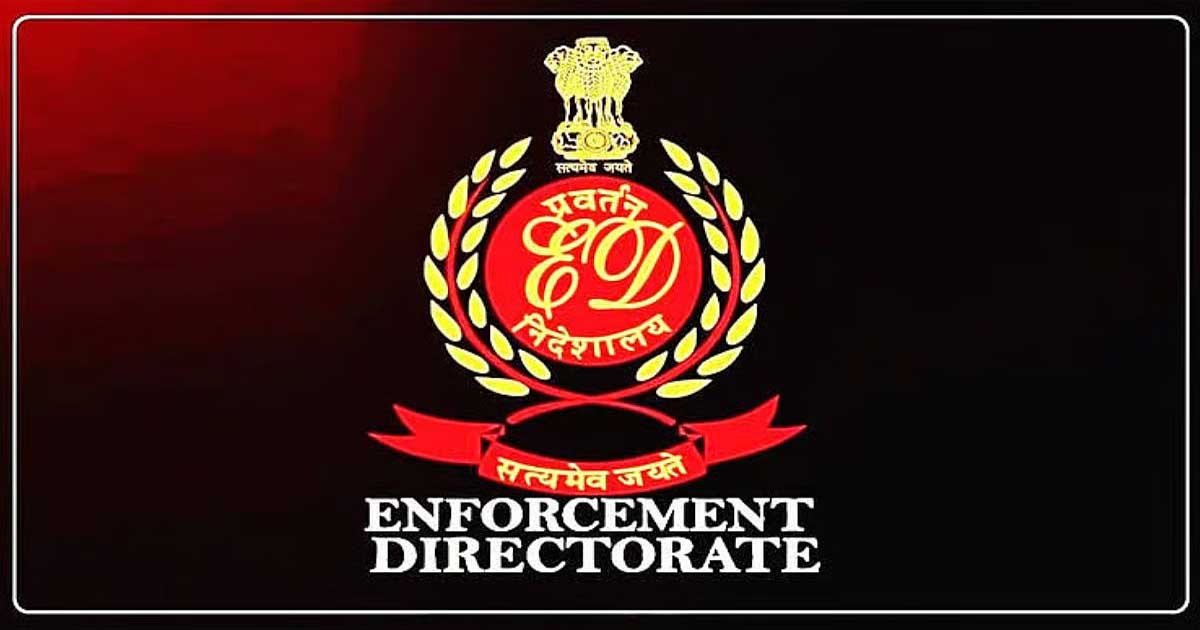Business
Righteous GST implementation to bolster online skill gaming sector in India
With the GST Council expected to meet soon, there has been a lot of conversation around GST restructuring, rate rationalisations, for and against views around minimum thresholds and more. Online skill gaming sector, one of the recognised sunrise sectors which has of late seen a lot of positive feedback from the Centre, has also been waiting to hear on GST for many distinct reasons.
The online skill gaming industry has been on an upward trajectory for the last 4-5 years and the pandemic put this industry growing at the rate of 38 per cent CAGR into the spotlight.
As per a recent BCG report, this sunrise sector in India has gained significant momentum with excellent Internet service providers, penetration of the use of mobiles across social and demographic barriers and India’s enthusiasm to adopt and adapt to the online gaming platforms.
India’s share is currently at 1-2 per cent of the global gaming market with a market size of $1.8 billion of which Real-Money gaming has the largest constituent of revenue pool driven by higher user paying propensity (around 20 per cent of total market size). The total number of users of gaming services are close to 433 million and is expected to touch 650 million by 2025. However, apart from fine-tuning the regulatory mechanism, there’s an urgent need to look at the GST levied on the sector.
Last year on May 24 a Group of Ministers (GoM) formed by the GST council to examine the taxation regime applicable to online gaming was seen as a progressive move, the industry hopes to see a stable and clear taxation regime. However, the committee was dissolved and a new one was formed earlier in February 2022.
Currently, services provided by online skill gaming platforms are classified under service accounting code 998439 of the GST services classification and through this attracts a rate of 18 per cent on the Gross Gaming Revenue (GGR) for the service provider whereas, the games of chance (including gambling, casinos and more) are subjected to 28 per cent GST.
The industry operators believe that the legislative view as proven by the jurisprudence in the country multiple times, clearly differentiates games of skill from games of chance and so the taxation levied should continue to take into account this differentiation. Furthermore, international practices related to taxes on gaming have proven that tax-rate shouldn’t exceed 20 per cent. Some of the developed economies like the UK, the US (Pennsylvania), Singapore have tax rate of GGR 15 per cent, 14 per cent and 7 per cent respectively. A report by Copenhagen Economics (one of the leading economics firms in Europe) also concludes that a tax rate in the range of 15 per cent to 20 per cent of GGR produces the most favourable outcomes for both operators and tax revenue.
Malay Kumar Shukla, Chief Legal and Compliance Officer, Games24x7 says, “The international experience relating to taxation of gaming in the context of the platform-fee/GGR based gaming models has clearly shown the downside of excessive taxation. The GGR-based gaming platforms can only absorb an optimal range of taxation which is in the range of 15 per cent to 20 per cent of GGR. Higher tax incidence of tax is bound to alter player and compliance behaviour and will neither work in the benefit of the gaming industry nor the government. Therefore, the interpretation taken by the ‘games of skill’ industry in India to be taxed on Gross Gaming Revenue is supported by the legal provisions of GST law and is also in line with most international practices relating to taxation of gaming platforms.”
At a time when the country has seen positive tax policies for some of the other identified sunrise sectors like biotechnology, chemical and renewable energy; it is only legitimate for this fastest growing tech industry within the M&E sector, to demand for a GST regime that can protect and promote the segment.
Business
ED Seizes ₹42 Lakh, Luxury Cars In Mumbai Drug Money Laundering Probe

Mumbai: The Enforcement Directorate (ED) seized Rs 42 lakh in cash, three luxury cars, property papers, and several digital devices during a search operation on Wednesday targeting a drug trafficking and money laundering network. The agency also froze multiple bank accounts and a locker linked to alleged drug trafficker Faisal Javed Shaikh and his wife, Alfiya Faisal Shaikh.
Officials said the searches were conducted at nine locations across Mumbai under the provisions of the Prevention of Money Laundering Act (PMLA), 2002. The operation aimed to trace the drug sale proceeds generated by a well-established narcotics network allegedly operated by the couple.
The ED initiated its money laundering probe based on a case registered by the Narcotics Control Bureau (NCB), Mumbai Zonal Unit, against multiple accused, including Faisal Shaikh, Alfiya Shaikh, and several others, including Ashik Varis Ali, Nasir Khan, Irfan Yusuf Faruqi, Azim Abu Salim Khan alias Azim Bhau, Faizan Mohd. Shafi Shaikh, and Mohd. Shahid Faridudin Chaudhary alias Baboos.
Investigators said Faisal Shaikh was procuring MD (Mephedrone) drugs from Salim Dola, a notorious drug kingpin who has been wanted by law enforcement agencies for his alleged role in large-scale narcotics trafficking. The NCB has announced a reward for information leading to Dola’s arrest.
After securing bail in the NCB case, Shaikh, described by officials as a habitual offender, was placed under preventive detention under the PIT-NDPS Act.
The ED’s probe revealed that Faisal and Alfiya Shaikh allegedly ran a structured network for the sale of MD drugs sourced from Dola. During Wednesday’s searches, the agency also covered premises connected to several individuals associated with shell companies with paper transactions exceeding Rs 100 crore, as well as firms involved in foreign outward remittances and financial dealings with the accused. Officials said these entities are being examined for their possible role in layering drug proceeds and routing the funds abroad through channels such as hawala, shell companies, and trade-based mis-invoicing.
Officials said the ED searches were critical to tracing both the “forward linkage” (movement of drug sale proceeds) and “backward linkage” (sources, beneficiaries, and conduits of funds), including whether the proceeds were channelled abroad via hawala, shell companies, or trade mis-invoicing. The seized and frozen assets including cash, bank accounts, lockers, vehicles, property documents, and digital devices are being examined under the lens of money laundering.
Business
Stock markets end week on positive note; Banking, IT, and pharma stocks lead gains

Mumbai, Oct 11: Indian equities ended the week on a positive note amid buying in banking, IT, and pharma stocks (in the last two sessions).
Investors’ sentiment remained firm toward banking stocks during the period, buoyed by the RBI monetary committee decision to keep the repo rate unchanged at 5.5 per cent, and it improved further after the government invited private sector professionals to lead the State Bank of India.
Meanwhile, pharma stocks picked up momentum at the end of the week after the US administration said that they do not plan to impose tariffs on generic drugs and signalled cutting biotech ties with flagged foreign firms, especially from China.
“Pharma stocks rallied as the US revived the Biosecure Act, aiming to cut biotech ties with flagged foreign firms, especially from China, providing a strong boost to Indian CDMOs. With the earnings season underway, investors are closely watching quarterly results for cues on market direction,” said Vinod Nair, Head of Research, Geojit Investments Limited.
On Friday, Indian equity benchmark indices ended higher for the second straight session, supported by strong buying in pharma and banking stocks.
Because of the weakness in IT stocks, the Sensex opened at 82,07,5 down about 100 points. But it quickly bounced back, rising 579 points to an intra-day high of 82,654.
At 82,501, the index ultimately closed 329 points higher, or 0.4 per cent higher. Likewise, the Nifty reached a peak of 25,331 during the day and ended the day 104 points, or 0.4 per cent, higher at 25,285.
“Investor sentiment improved after the government invited private sector professionals to lead the State Bank of India. This marks a broader policy shift towards allowing private participation in public sector enterprises, aimed at enhancing efficiency and governance,” Nair added.
The Nifty index displayed strong bullish momentum over the past week, advancing 391 points or 1.57 per cent, while Sensex rallied over 1,000 points or 1.35 per cent.
“On the weekly chart, the index has formed a cup and handle pattern, and a decisive break out of this formation, supported by increasing volumes, would signal the potential for further sustained upside,” said Hardik Matalia of Choice Equity Broking.
The Bank Nifty (up 1.84 per cent), Nifty IT (up 4.8 per cent) and Nifty Pharma (up 2.12 per cent) fueled the market momentum this week.
Business
Sensex, Nifty edge higher as geopolitical tensions ease

New Delhi, Oct 10: Indian stock markets opened on a flat note but soon moved higher on Friday, supported by positive global sentiment.
The easing of geopolitical tensions in the Middle East and signs of a possible trade deal between the US and India boosted investor confidence.
After the opening bell, the Sensex gained 148 points, or 0.18 per cent, to trade at 82,320 levels. The Nifty also rose 40 points, or 0.16 per cent, to 25,221 levels.
“Though yesterday’s push higher in the second half failed to clear the week’s high, it did serve to invalidate the bearish bias of the evening star candle stick pattern,” market experts said.
“This encourages us to look for 25460, in the days ahead. For the day, inability to push and float above 25215 or direct fall past 25113, could render the trend sideways, but may not call for a break of 24982 right away,” they added.
In the broader market, the Nifty Midcap 100 index inched up 0.18 per cent, while the Nifty Smallcap 100 advanced 0.28 per cent — indicating healthy participation from mid- and small-cap stocks.
Among the sectoral indices, Nifty Metal was the worst performer, slipping 1.4 per cent. It was followed by weakness in Auto, Pharma, and Healthcare stocks.
On the other hand, sectors such as Banking, Energy, FMCG, IT, Consumer Durables, Oil & Gas, and Realty were trading with gains.
In the Sensex pack, Power Grid, State Bank of India, NTPC, Adani Ports, and Asian Paints were among the top gainers.
Meanwhile, Tata Steel, TCS, Bajaj Finance, M&M, and HCL Tech were trading in the red.
“The overall market environment is turning positive. Globally, the GAZA peace accord signals end to the conflict and reduction of geopolitical risk from the region,” analysts said.
“Domestically, there are indications of a trade deal between US and India with India ‘rebalancing’ its oil purchases,” they added.
According to market analysts, these positive developments and the shift in FII strategy ( FIIs were buyers in the cash market in the last three trading days) bode well for the market.
-

 Crime3 years ago
Crime3 years agoClass 10 student jumps to death in Jaipur
-

 Maharashtra1 year ago
Maharashtra1 year agoMumbai Local Train Update: Central Railway’s New Timetable Comes Into Effect; Check Full List Of Revised Timings & Stations
-

 Maharashtra12 months ago
Maharashtra12 months agoMumbai To Go Toll-Free Tonight! Maharashtra Govt Announces Complete Toll Waiver For Light Motor Vehicles At All 5 Entry Points Of City
-

 Maharashtra1 year ago
Maharashtra1 year agoFalse photo of Imtiaz Jaleel’s rally, exposing the fooling conspiracy
-

 National News1 year ago
National News1 year agoMinistry of Railways rolls out Special Drive 4.0 with focus on digitisation, cleanliness, inclusiveness and grievance redressal
-

 Maharashtra11 months ago
Maharashtra11 months agoMaharashtra Elections 2024: Mumbai Metro & BEST Services Extended Till Midnight On Voting Day
-

 National News1 year ago
National News1 year agoJ&K: 4 Jawans Killed, 28 Injured After Bus Carrying BSF Personnel For Poll Duty Falls Into Gorge In Budgam; Terrifying Visuals Surface
-

 Crime12 months ago
Crime12 months agoBaba Siddique Murder: Mumbai Police Unable To Get Lawrence Bishnoi Custody Due To Home Ministry Order, Says Report












